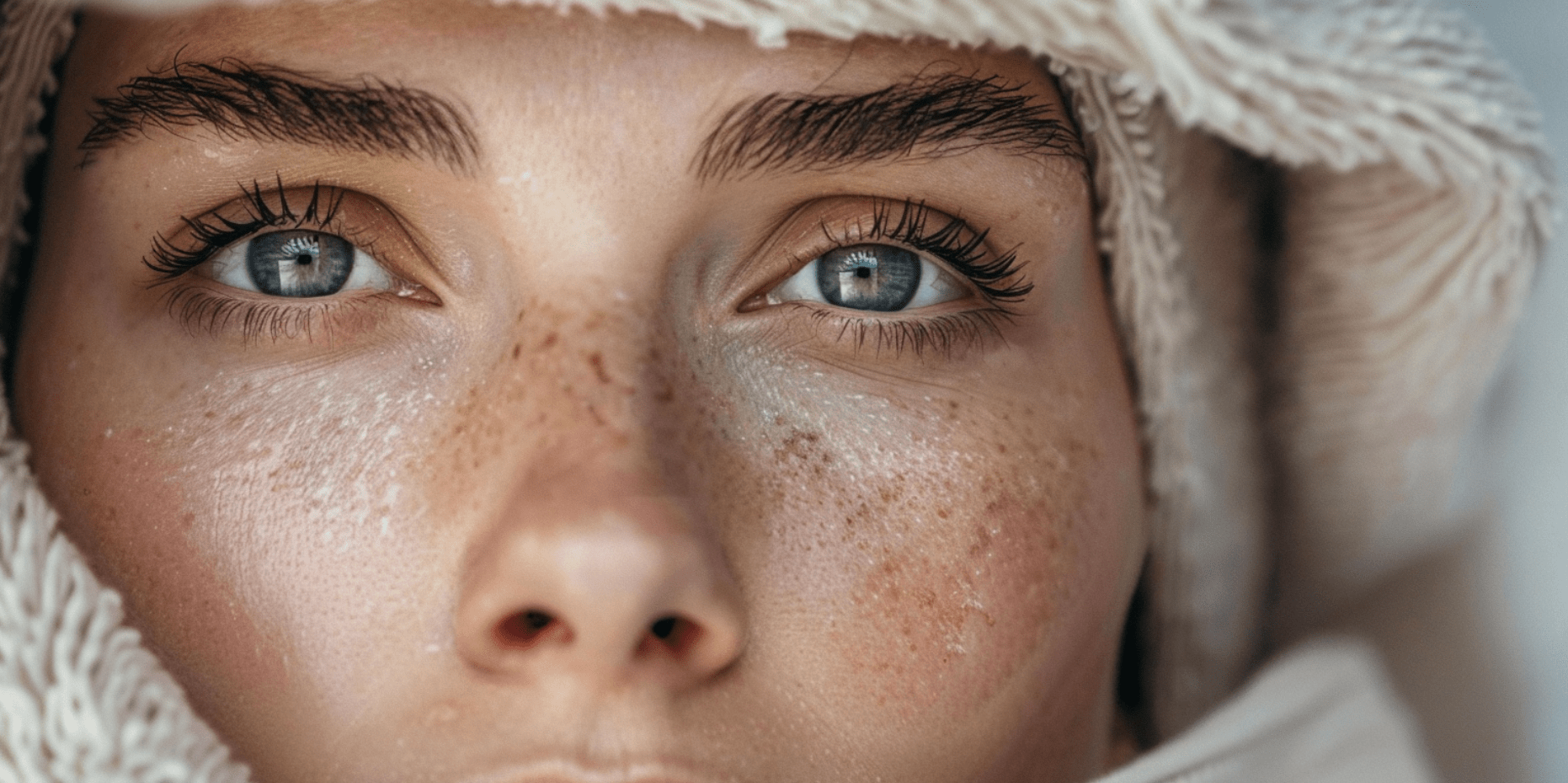Welcome to our latest article, where we dive into the fascinating world of aging and skincare. Today, we’re exploring a question that has been on the minds of many: what age do wrinkles appear? Wrinkles are a natural part of aging, but the timing varies for each individual. In our quest for youthful skin, it’s essential to understand the aging process. Various factors contribute to the development of wrinkles, such as genetics, sun exposure, and lifestyle choices. By comprehending these influences, we can better navigate the challenges that aging brings and find effective ways to address them.
So, if you’ve ever wondered what age do you start getting wrinkles, this article is for you. Let’s embark on this journey together and uncover the secrets to healthy and radiant skin. But before we begin, let’s not forget the cosmetic options, such as Botox Walnut Creek, that can help address wrinkles and restore a youthful appearance.
Understanding Skin Aging
In this section, we will explore the factors that influence wrinkles and delve into the skin’s natural aging process. By understanding the signs of aging and how they manifest, readers will gain valuable insights into why wrinkles start to form.
Various factors influence the development of wrinkles. One key factor is the natural aging process. As we age, our skin undergoes changes that lead to the appearance of wrinkles. The production of collagen and elastin, important proteins that maintain skin firmness and elasticity, decreases over time. This loss of structural support contributes to the formation of wrinkles.
In addition to the natural aging process, other factors can accelerate the development of wrinkles. Exposure to the sun’s ultraviolet (UV) rays is a major contributor to skin aging. UV rays break down collagen and elastin fibers, leading to wrinkle formation. Environmental factors like pollution and harsh weather conditions can also contribute to skin aging.
Tip: Protecting your skin from the sun by wearing sunscreen and protective clothing can help prevent premature aging and wrinkle formation.
The signs of aging and the appearance of wrinkles can vary from person to person. Genetics, lifestyle choices, and skincare habits can all affect how quickly and visibly wrinkles develop. Some individuals may notice wrinkles earlier than others, especially if exposed to excessive sun damage or engaged in unhealthy lifestyle habits such as smoking.
Tip: Maintaining a healthy lifestyle, including regular exercise, a balanced diet, and avoiding smoking, can help slow down the aging process and reduce the risk of developing wrinkles.
While wrinkles are a natural part of the aging process, there are measures individuals can take to minimize their appearance. A proactive skincare routine, including moisturizing, exfoliation, and the use of anti-aging products, can help improve the overall health and appearance of the skin.
Tip: Investing in high-quality skincare products that contain ingredients like retinol and hyaluronic acid can help reduce the appearance of wrinkles and promote a more youthful complexion.
By understanding the factors influencing wrinkles and the natural aging process and implementing healthy skincare habits, individuals can take control of the aging process and maintain a more youthful appearance.
Early Signs of Aging
Many individuals start noticing the early signs of aging, including wrinkles, as early as their mid-20s. While it may seem surprising, several factors can contribute to the premature appearance of wrinkles.
1. Genetics: Some people are genetically predisposed to develop wrinkles at an earlier age. If your parents started noticing wrinkles in their 20s or 30s, you may be more likely to experience the same.
2. Sun Exposure: Excessive sun exposure can accelerate the aging process and lead to wrinkles at 25. UV rays break down collagen and elastin in the skin, causing it to lose its elasticity and resilience.
3. Lifestyle Choices: Unhealthy lifestyle choices such as smoking, excessive alcohol consumption, and poor diet can contribute to the premature formation of wrinkles. These habits can deplete the skin of essential nutrients and antioxidants, accelerating the aging process.
4. Dehydration: Inadequate hydration can make the skin appear dull and dry, emphasizing the appearance of fine lines and wrinkles. Drinking enough water and using moisturizers can help maintain the skin’s hydration levels and delay the onset of wrinkles.
5. Facial Expressions: Repetitive facial expressions, such as squinting or frowning, can create permanent lines and wrinkles over time. Being mindful of your facial movements and practicing facial exercises or relaxation techniques can help reduce the formation of wrinkles.
6. Lack of Skincare Routine: Not following a proper skincare routine can leave the skin vulnerable to damage and premature aging. Regularly cleansing, exfoliating, moisturizing, and skin protection with sunscreen can help prevent premature wrinkles.
Preventing Premature Wrinkles: While it may not be possible to avoid wrinkles completely, you can take steps to delay their onset. Using sunscreen daily, eating a balanced diet rich in antioxidants, staying hydrated, and adopting a consistent skincare regimen can contribute to healthier, more youthful-looking skin.
Cosmetic treatments like Botox are available for individuals looking for more immediate and effective solutions to combat early signs of aging. Botox injections can temporarily smooth out existing wrinkles and prevent new ones from forming. Consulting with a skilled practitioner, such as at Botox Walnut Creek, can help individuals explore their options and determine the best course of action.
Specific Areas Prone to Wrinkles
So, when do forehead wrinkles start? As we age, certain areas of our face and body are more prone to developing wrinkles. For example, the delicate skin on our forehead is particularly susceptible to forehead wrinkles, also known as expression lines. Repetitive facial movements often cause these wrinkles and can deepen over time.
The skin around our eyes is another area that commonly develops wrinkles. The skin in this area is thinner and more fragile, making it susceptible to fine lines and crow’s feet. These wrinkles are often exacerbated by factors such as sun exposure and squinting.
Additionally, the neck is a common area where wrinkles tend to form. The skin on the neck is thinner and has fewer oil glands, making it more prone to dryness and the subsequent development of wrinkles.
Understanding why these areas are more susceptible to wrinkles can help us take targeted measures to address them. Adopting targeted skincare practices and treatments for the forehead, eye area, and neck can reduce the visibility of wrinkles in these regions, leading to a fresher and more youthful look.
What Age Do Wrinkles Start: Lifestyle and Environmental Factors
Various lifestyle and environmental factors play a significant role in the appearance of wrinkles. Understanding how these factors can influence skin aging allows individuals to make informed choices to potentially delay the onset of wrinkles.
Sun Exposure
Sun exposure is one of the primary contributors to premature aging and the development of wrinkles. Prolonged sun exposure without proper protection can lead to the breakdown of collagen and elastin, which are essential for maintaining skin elasticity. To minimize sun damage, it is crucial to apply sunscreen with a high SPF, wear protective clothing, and seek shade during peak sunlight hours.
Smoking
Smoking is not only harmful to overall health but also has detrimental effects on the skin. The chemicals in cigarettes can reduce blood flow to the skin, impair collagen production, and accelerate the breakdown of elastin. Quitting smoking can have significant benefits for skin health and help prevent the premature appearance of wrinkles.
Skincare Routine
A consistent skincare routine is essential for maintaining healthy skin and preventing wrinkles. Cleansing the face twice daily, using moisturizers and serums rich in antioxidants, and incorporating products with retinol can help reduce the signs of aging. It is also important to avoid harsh chemicals and opt for gentle, hydrating products suitable for your skin type.
Diet and Hydration
The food we consume and our hydration levels can impact skin health and the appearance of wrinkles. A balanced diet rich in fruits, vegetables, whole grains, and omega-3 fatty acids can provide essential nutrients that support skin elasticity. Additionally, staying hydrated by drinking an adequate amount of water throughout the day can help maintain skin moisture and minimize the appearance of fine lines and wrinkles.
By being mindful of these lifestyle and environmental factors, individuals can make positive changes that promote healthy and youthful-looking skin. Incorporating sun protection, avoiding smoking, following a consistent skincare routine, and maintaining a nutritious diet and hydration levels are crucial steps in reducing the likelihood of wrinkles and maintaining a vibrant complexion.
Final Words
In conclusion, understanding the timeline and factors that influence the appearance of wrinkles can help individuals take proactive steps to prevent them. By incorporating some simple lifestyle changes and a targeted skincare routine, youthful-looking skin can be maintained for longer.
To avoid the formation of wrinkles, shielding the skin from sun damage through the use of sunscreen and minimizing extended exposure to the sun is crucial. In addition, incorporating a healthy diet rich in antioxidants and staying hydrated can help nourish the skin from within.
Establishing a regular skincare routine that includes moisturizing and using products with potent ingredients like retinol can also help reduce the signs of aging. Finally, considering cosmetic interventions such as Botox Walnut Creek can provide effective solutions for individuals seeking to address existing wrinkles or fine lines.



